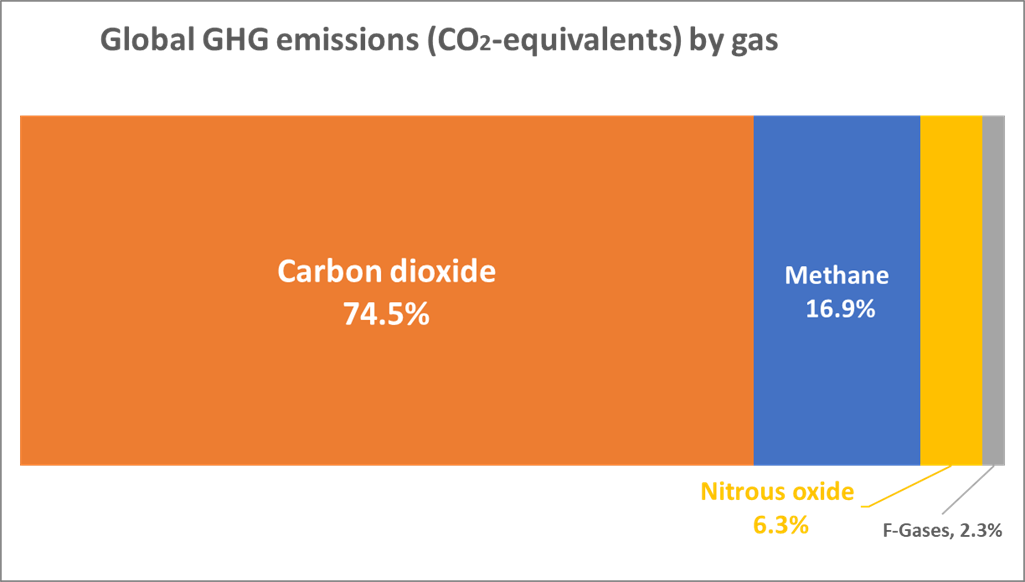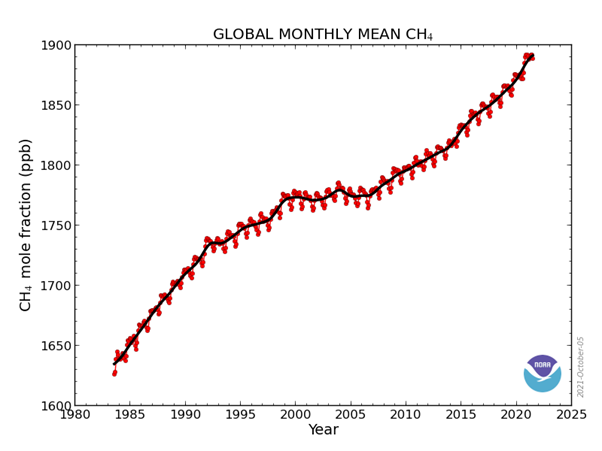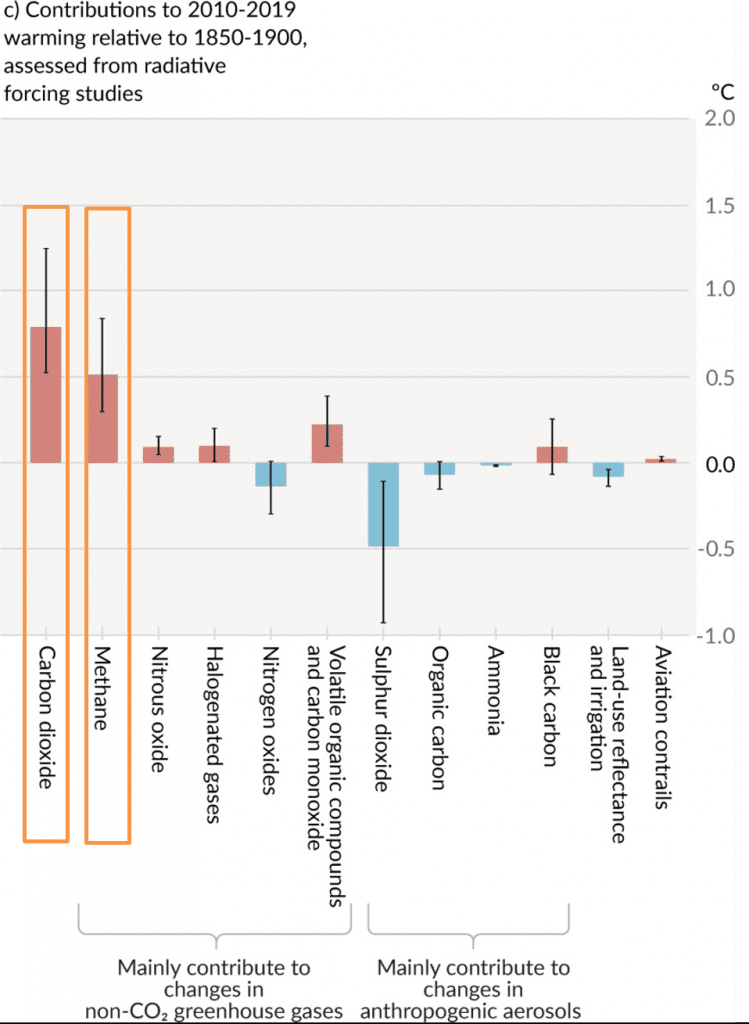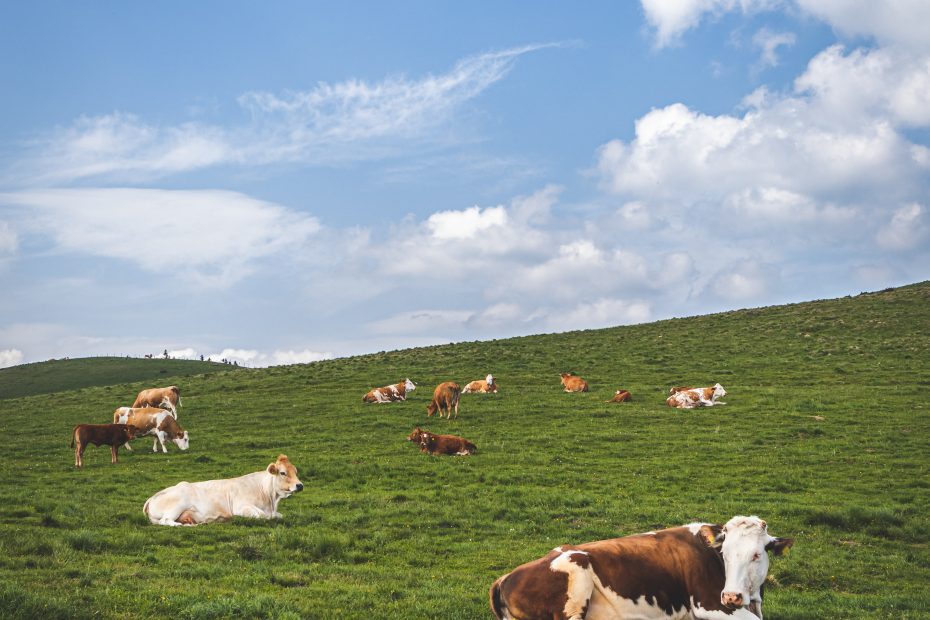Welcome back, readers!
We know that human emissions of greenhouse gases (GHG) are warming our planet like a blanket. And that carbon dioxide (CO2) is the primary driver. However, other greenhouse gases responsible for changing our climate, such as methane, are often overlooked. This article analyzes methane emissions, the second-largest contributor, the latest available numbers & commitments.
Global methane emissions
We use the concept of carbon dioxide equivalents (CO2e) to combine the different gases responsible for global warming (carbon dioxide, methane, nitrous oxide, and F-gases).

We previously analyzed the breakdown of the global GHG emissions, and this chart shows that carbon dioxide (CO2) was the main contributor with 74,5%, followed by methane (CH4), 16.9%.
Methane emissions increase over time
The amount of methane in the atmosphere increased dramatically over the past decades (figure below).

Why do we need to reduce methane emissions?
Methane (CH4) is a powerful greenhouse gas: it traps a lot more heat than carbon dioxide – tens of times more. This means that it contributes to warming our planet: from the figure below, we can see that it is the second-largest driver of warming.

Another characteristic of methane is that it is a short-lived climate pollutant. It means that it lasts for a relatively short time in the atmosphere compared to carbon dioxide (a decade, instead of hundreds of years). Therefore, cutting methane provides a quick way to limit near-term temperature rise.
The impact of methane emissions on our health
Methane also contributes to forming a dangerous air pollutant: the (ground-level) ozone. Ozone attributable to human-caused methane emissions causes premature deaths due to respiratory and cardiovascular diseases.
The current status?
Methane emissions continue to rise globally.
Where does methane come from?
More than 90% of human-caused (anthropogenic) methane emissions come from three sectors:
- Agriculture* around 40%. Livestock emissions from manure management and enteric fermentation (yes, this means cow burps) account for about 32%, and another 8% comes from rice cultivation;
- Fossil fuels* around 35%. Methane is released during oil & gas activities accounting for about 23%, and another 12% from coal mining;
- Landfills and waste* management make up about 20%.
*Data from the Global Methane Assessment.
The latest commitment to reduce methane emissions
In September 2021, the European Union and the United States announced the Global Methane Pledge, a collective initiative to reduce global methane emissions by at least 30% by 2030 below 2020 levels.
This is good news! And it comes ahead of the crucial climate summit, the 26th UN conference of parties (CoP26), to be held in Glasgow in November. We want more countries to join.
Remember the big picture: the global greenhouse gases emissions
What about the promises of the Paris Agreement to keep global temperature increases well below 2 degrees Celsius (°C) – with efforts to 1.5 °C – by the end of the century?
On the 17th of September 2021, the UN Climate Change published a synthesis report on climate action plans (as communicated in countries’ Nationally Determined Contributions, NDCs).
According to that report, the available climate actions of all 191 Parties taken together will deliver a +16% increase in global GHG emissions in 2030 compared to 2010. Yes, an increase.
Such an increase would lead to a temperature rise of about 2.7 °C by the end of the century, with devastating impacts on people and natural ecosystems – as we know from the latest IPCC “Code red for humanity” report.
The need of urgent action
We want more ambitious commitments at the coming climate summit in Glasgow (the CoP26), followed by credible action plans with measurable targets (interim targets consistent with the mid-century net-zero pledges). Not empty promises, but legally binding plans followed by actions consistent with the science.
We are not on track to deliver on the promises made. We know the challenges, and we have the ability and tools to solve them.
It’s time to act and guarantee a sustainable future. For us, for our planet & the future generations.
Thanks for reading!
If you enjoyed this article, subscribe to Protegoterra’s newsletter.

